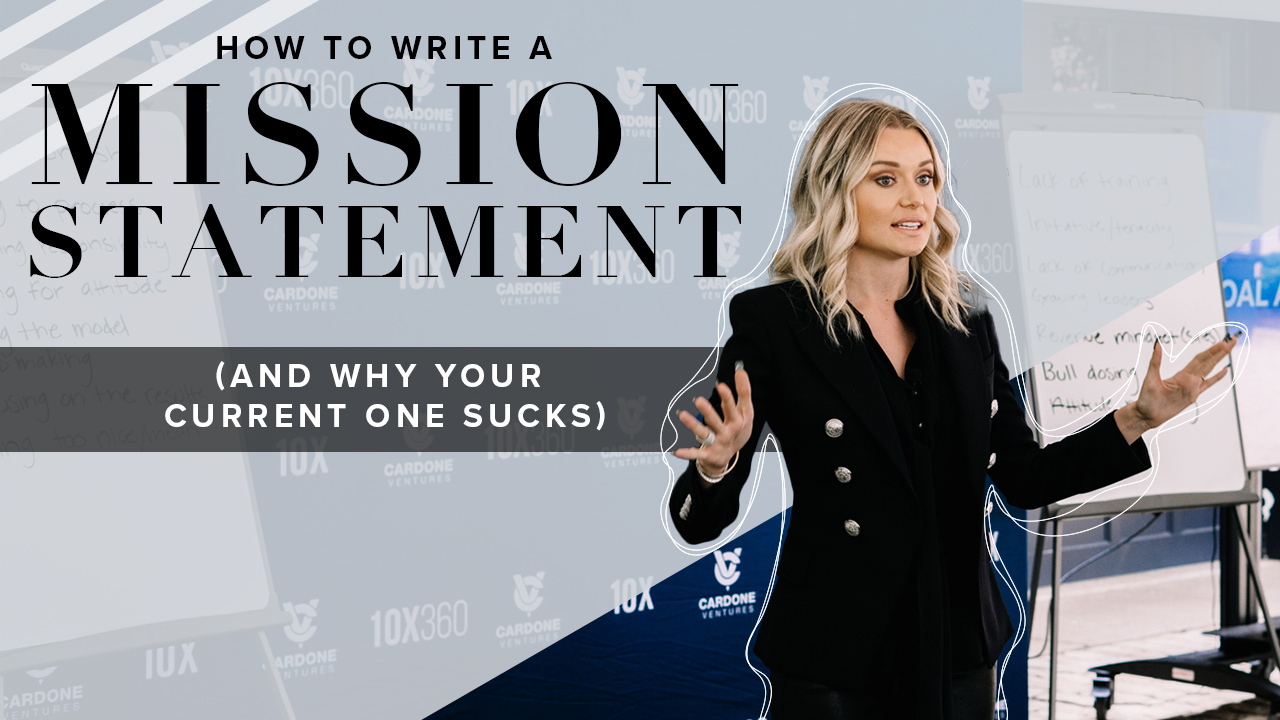Most businesses have mission statements, but what do they actually do with them? Let’s explore the philosophy behind mission statements and how we use ours to focus our goals, align our teams, and partner with clients who want to achieve amazing results!
Mission statements: My teachable moment
I have a story to tell. It’s not my favorite story, but it’s an experience that taught me a lot, so, in fact, it is a story that has a silver lining. A teachable moment, as they say. About eight years ago, the president of the company I was working for at the time passed me in the hallway. “Hey, Natalie!” he said, as he swiftly passed by. “What’s our mission statement?” Only then did he turn around and stop so he could hear my response.
I froze. I didn’t know what the answer was. And I hated how that felt. I pride myself on learning just about everything I possibly can about a business, but, on this particular day eight years ago, I found myself in a situation without the ammunition I needed to properly answer the president’s question, and I admitted as much to him.
The thing is, we both learned something in that moment. It told him that the organization wasn’t doing everything that it should to educate new employees, and it taught me that any organization I was going to choose to be a part of needed to be clear and consistent about their mission with everyone, no matter what their position was.
Your mission statement creates the standard for your environment
A mission statement reflects how you’ve decided to “show up” to work each and every day. It allows your team to understand why it is that you exist. Think of your mission statement as a filter. This filter helps to define the quality of the environment that you’re working to create.
In our world, we tend to look at everyone we come into contact with in two ways: either they have the potential to work with us or work for us.
We’re always looking for people who align with our values and our vision, and, by never losing sight of our mission statement and by always conducting ourselves in a manner that reflects our mission, we’re evaluating our relationships on how we can achieve that mission and work to attract the employees and clients who will make us more successful. Ask yourself: Is your mission providing you the same level of return? If not, you might want to reconsider it!
It’s time to evaluate your current mission statement
We suggest you take a look at your existing mission statement and make sure it’s just as simple and action based. Here are my go-to questions when I consult our clients to rework their mission statements:
Does it pinpoint your “why”?
This statement should define why your business exists. Who do you serve? What impact does the organization make? Only you as the business owner can answer this question. You started your business to do . . . what? There should be no question about what it is your business exists to do. This isn’t philosophical. It’s a tangible impact that makes your future team members think, “Wow—I want to help with THAT.” Note that the mission statement should have nothing to do with you or your team—your mission is about your clients. We’ll get into why this is important in a few posts, but take heed of this now. It will make all the difference when you have underperforming team members.
Can you answer “how”?
This is a critical question to consider before you start shouting your why to the world. Here’s the deal: it’s okay not to have every step mapped out in order to achieve your mission, but you can’t sound like an idiot either. Your mission statement should create confidence in your team, but if it’s so far out there and you aren’t able to tie out your product or service growth to your why, you need to either spend time creating a plan (this is ALWAYS prefered) or you need to dial your mission back. We work with clients who have these MASSIVE mission statements but look perplexed when you ask them, “How are you going to get there?” When someone asks you, be able to have a 60-to-90-second response—you don’t have to pull out an 87-page business plan.
Is it one sentence?
Make it short. No longer than one sentence, please. This can be challenging because you do SO many things, but let’s go back to why you’re creating this in the first place: it’s for you and your team to be able to rattle off with ease when talking with a candidate or when you’re refocusing a team member on the main thing instead of getting distracted with a shiny, out-of-scope idea. If your current mission statement is a paragraph, move that sucker over to your website as a description of what you do and condense your actual mission statement to one sentence.
Does it start with a “we” plus a verb?
This is an easy one: start your mission statement with “We” and then a verb. Great verbs include the following: transform, create, help, change, impact, etc. So your statement would read like this: ABC Company transforms how . . . .
This format creates clarity on the impact your company creates, feels aspirational, and serves as an invitation to others who are passionate about your why as well. Remember: you are looking for people who are just as passionate as you are about your cause, but it’s YOUR job to make your passion and intent clear to them.
Is it easy to memorize?
It shouldn’t take more than a day for a new team member to memorize your mission statement. Think about running into your newest team member on their second day of work; they should be able to state your mission with confidence and clarity. If it takes longer than that, your mission statement is likely too complicated or long. You should be able to state it with zero hesitation. When I work with clients during a workshop, I’ll ask them for their mission statement and they’ll pull up their website to read it to me. Flunk. Fail. Nope. This doesn’t work. Remove some words, and let’s do this again. You can’t expect your team to know something that you don’t, especially as it pertains to your why.
Is it written in plainspoken language?
No corporate jargon is allowed to seep into your mission statement. You are not trying to confuse people. Early in my career, I remember attending networking events where everyone would talk in such high-level terms about what they did. I would leave those conversations entirely confused and unclear about what they were saying, but I didn’t ask because I didn’t want to look stupid. I would nod my head like I understood. THIS is why you don’t put industry speak or fluff into your mission. The point isn’t to confuse people—it’s to bring people into your environment who want to HELP you scale and grow your business. No one wants to work at a place where they’re confused by what the company does. If they don’t understand what you do, you’re not going to be able to get them in the door.
Is it compelling?
Create something that inspires and excites. I won’t get all woo-woo on you here, but here’s the deal: we all get one life, and high performers don’t just want to work hard and grind—they want to make a difference. If your mission statement isn’t compelling, why are you thinking it’s going to attract top talent? This is more of a gut check than anything else. Read your existing mission statement, and ask: Does this inspire me to get out of bed every morning? As the business owner, if you aren’t compelled by your why, neither are your team or potential candidates. You’ve got one shot at this thing called life—the reason behind the work you do should invigorate you.
If you don’t have a current mission statement, download our worksheet to get started and see what NOT to do. And remember: don’t overthink it! So many people get all philosophical and heady with this conversation. This is not a time to question your life’s existence. Just think about the business’s why and fill in the blank: My business exists to serve ________ .
How to use your mission statement:
Once you’ve created your mission statement, put it everywhere. Seriously. Make it a part of your business’s letterhead. Put it in your email signatures. Plaster it everywhere you possibly can so that you, your team, your clients, and everyone who comes in contact with you know exactly what it is that you’re about. Places to add your mission statement include the following:
- Job posts
- Interview process
- Performance review conversations
- All-team meetings
- Email signatures
- Your website
- Employee handbook
- Onboarding checklist
A focused mission: eliminate the friction that makes business hard
You see, when you don’t have your why in place, business can get really hard. As a business owner, you’re making decisions that affect the trajectory of your business each and every day. When you’re making decisions with your mission in mind—a mission that is oriented around serving your customers—it makes your ability to make those tough decisions that much easier. Less friction. More action. More accountability. Better results. And isn’t that ultimately what you want?
Do these potential employees align with your business’s mission in terms of their talent, attitude, and desire to grow? Then they pass through the filter. What about potential clients? Do they have the open-mindedness and the drive to partner with you in order to achieve their next level of growth? If so, then they pass through. All others need to remain outside until they align with the mission. Otherwise, you’re all wasting your resources.
The Cardone Ventures mission statement: Our Why
Our mission statement is vital to the work we do at Cardone Ventures because it literally guides the way we do business. Our mission statement is, “We help our clients achieve their personal, professional, and financial goals through the growth of their businesses.”
It’s simple, it’s actionable, and it’s applicable to everyone in the business, including our clients. They know we exist to serve their goals, and we know that each and every decision we make hinges on whether or not its outcome will support our clients.
A mission statement is the first step. Now that your why is nailed down, let’s focus on where you’re going.
If you’re still finessing the details of your mission statement, my podcast episode can serve as your guide.
There are so many more ways in which you can use your mission to focus your business and attract the team you need to scale your business. Join me for one of my People Essentials Workshops where I help you draft and give feedback on your mission, vision, and values.
Learn more at cardoneventures.com/events.

